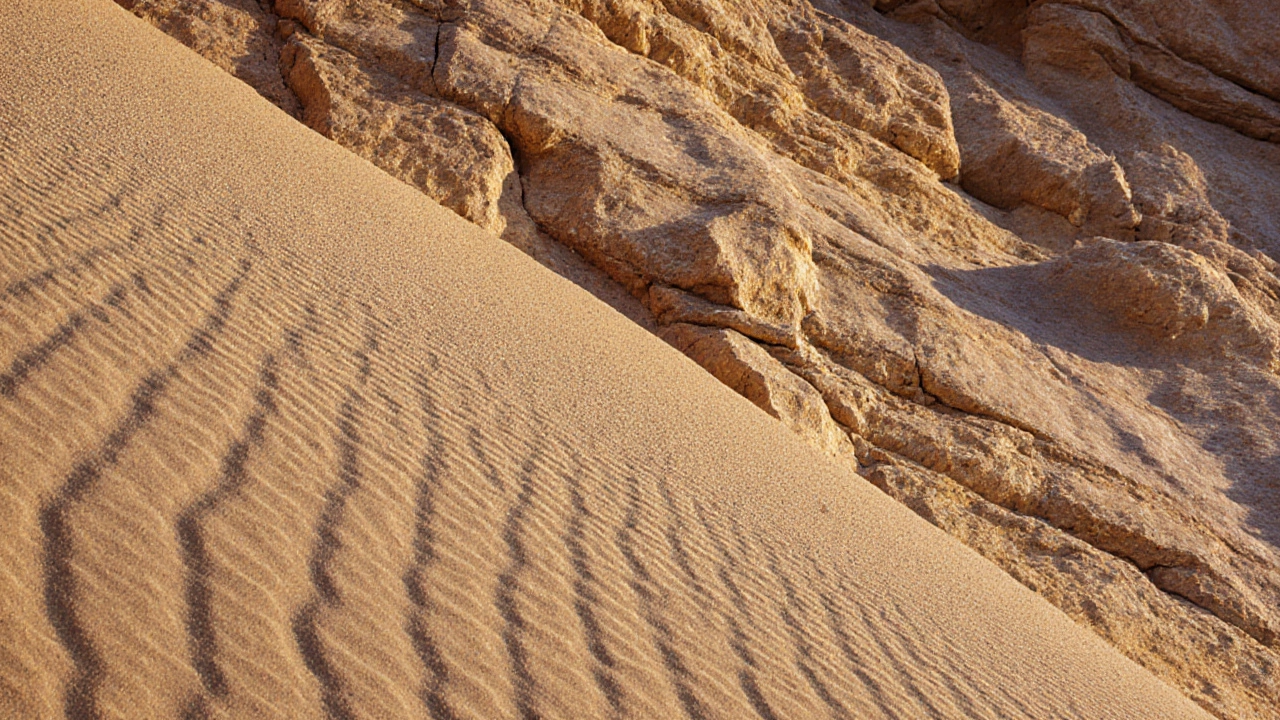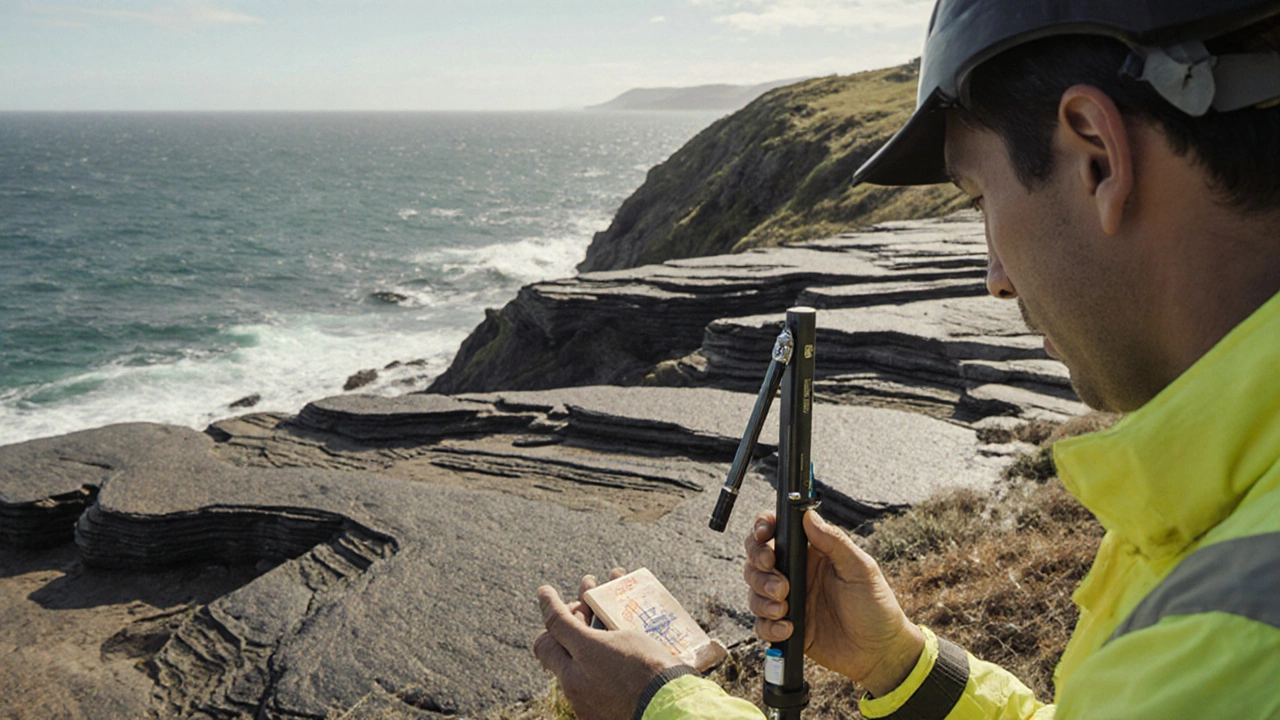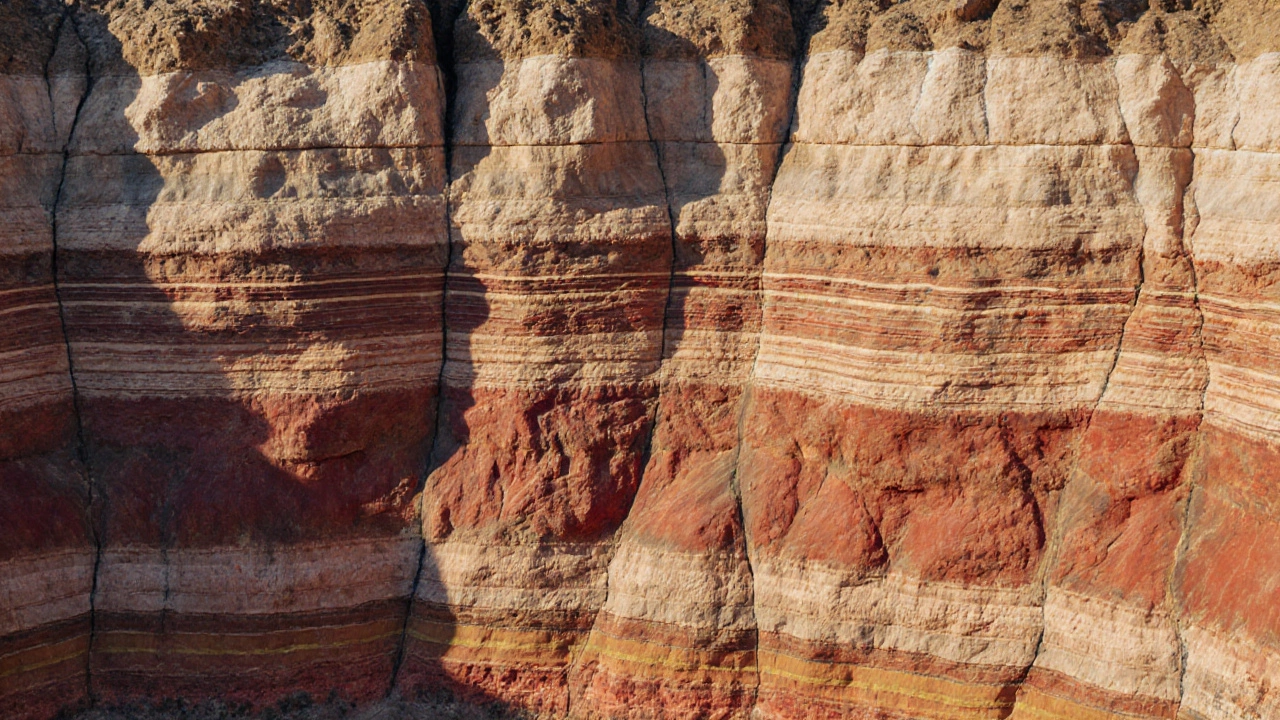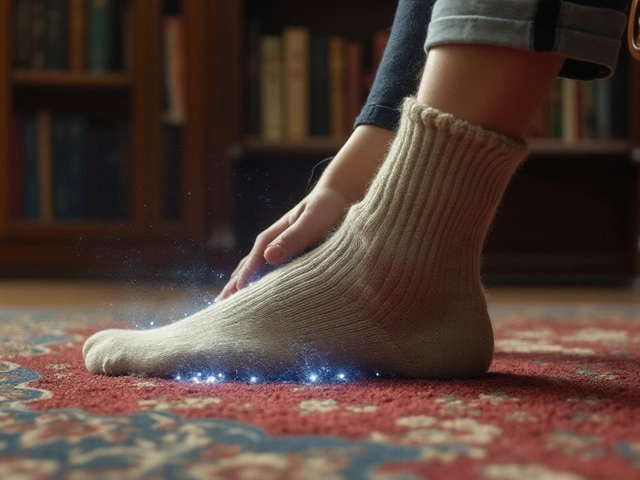Bedding Type Identifier
Identify Your Bedding Type
Enter your observations to identify the bedding type.
When you think of bedding, you probably picture sheets, pillows, and a cozy duvet. But in science, especially geology, bedding means something completely different. It’s not about sleep-it’s about how Earth builds its own layers over millions of years. If you’ve ever seen a cliff face with horizontal stripes of rock, those are bedding planes. They’re the fingerprints of ancient rivers, oceans, and deserts frozen in stone.
Bedding in Geology: Layers of Time
In geology, bedding refers to the layering of sedimentary rocks. These layers form when particles like sand, silt, or clay settle in water or air and accumulate over time. Each layer, or bed, represents a specific period of deposition. Think of it like stacking pancakes-each one is a snapshot of what was happening at that moment. One bed might be coarse gravel from a flash flood. The next could be fine mud from a calm lake. The differences in texture, color, and thickness tell geologists what the environment was like when the layer formed.
Bedding is the foundation of stratigraphy-the study of rock layers. Without bedding, scientists couldn’t read Earth’s history like a book. The order of the layers follows the principle of superposition: the oldest layers are at the bottom, the youngest at the top. This rule lets geologists date events without needing a clock. If you find a fossil in a certain bed, you know it lived when that layer was being deposited.
How Bedding Forms
Bedding starts with erosion. Wind, water, or ice breaks down rocks into tiny fragments. These particles get carried away-sometimes hundreds of kilometers-and eventually drop out of motion. Where they settle depends on the environment:
- In rivers, coarser grains like pebbles settle first, then sand, then silt as the water slows down.
- In oceans, fine mud drifts down from the surface and slowly piles up on the seafloor.
- In deserts, wind blows sand into dunes that shift and bury themselves under new layers.
Over time, pressure from new layers on top squeezes the sediment together. Water drains out, and minerals glue the particles into solid rock. That’s how sand becomes sandstone, mud becomes shale, and gravel becomes conglomerate. Each type of rock has a characteristic bedding pattern.
Types of Bedding Structures
Not all bedding looks the same. Geologists classify bedding based on its shape, thickness, and internal features:
- Horizontal bedding: The most common type. Layers lie flat, like stacked paper. Seen in deep ocean or lake settings where sediments settle slowly without disturbance.
- Cross-bedding: Layers tilt at angles. This happens in dunes or river channels where sediment slides down slopes. The angled layers point in the direction the wind or water was moving.
- Graded bedding: Each layer gets finer from bottom to top. This forms during underwater landslides or turbidity currents-fast flows that dump coarse material first, then fine stuff as the current dies down.
- Parallel bedding: Thin, uniform layers stacked neatly. Often found in quiet, deep-water environments like the abyssal plain.
These patterns aren’t just pretty. They’re clues. Cross-bedding in a desert sandstone tells you ancient winds blew from the northwest. Graded bedding in a mountain rock suggests a prehistoric tsunami swept through the area.

Bedding Planes and Rock Breakage
Bedding planes are the surfaces between layers. They’re often the weakest part of a rock formation. That’s why cliffs crumble along horizontal lines, and why some rocks split cleanly into thin sheets. In engineering, bedding planes matter. Tunnels, dams, and roads built parallel to bedding can slide. Builders check for bedding orientation before digging.
Even in mining, bedding controls how ore deposits are accessed. If a gold vein runs parallel to bedding, miners follow the layer. If it cuts across, they dig vertically. Bedding isn’t just history-it’s a practical guide for how we use the Earth’s resources.
Bedding vs. Other Rock Layers
Not every layer in rock is bedding. There are other types of layering that people sometimes confuse with it:
- Jointing: Cracks formed by stress, not deposition. These cut across layers, not along them.
- Foliation: Found in metamorphic rocks like schist. Formed by heat and pressure squeezing minerals into parallel bands-not from sediment settling.
- Volcanic flows: Layers of lava cooling one after another. These are igneous, not sedimentary, so they’re not called bedding.
Bedding is strictly a sedimentary feature. If the rock wasn’t made from settled particles, it doesn’t have bedding.
Why It Matters Today
Understanding bedding helps us find oil, gas, and groundwater. Oil accumulates in porous rock layers trapped between impermeable ones. Geologists map bedding to predict where those traps are. In climate science, ancient bedding in ocean cores reveals past sea levels, temperatures, and CO₂ levels. The layers in Antarctic ice cores? Those are technically not bedding-they’re annual snowfall layers-but the same principle applies: layers = time.
Even archaeologists use bedding. When digging ancient sites, they treat each layer as a separate time period. A potsherd in a 3,000-year-old bed doesn’t belong with tools from a 5,000-year-old bed. Bedding gives context to human history too.

Real-World Examples
One of the clearest examples of bedding is the Grand Canyon. Its walls show hundreds of distinct layers, each with a different color and texture. The Redwall Limestone is a thick, cliff-forming bed. Above it, the Supai Group has thin, reddish beds of sandstone and shale. These layers were deposited over 300 million years, from shallow seas to desert dunes.
In New Zealand, the Kaikoura Coast exposes dramatic bedding in uplifted seafloor rocks. You can see tilted layers where tectonic forces pushed ancient ocean sediments upward. The contrast between soft mudstone and hard sandstone layers shows how different materials respond to erosion.
Bedding in Everyday Life
You don’t need to be a geologist to notice bedding. Look at a rock wall in a garden, a roadside cut, or even a pebble you pick up on the beach. If you see thin, parallel lines running across it, you’re looking at bedding. It’s everywhere. And every layer is a story-of wind, water, time, and change.
Is bedding the same as stratification?
Yes, in geology, bedding and stratification are used interchangeably. Both refer to the layering in sedimentary rocks. Stratification is the broader term that can include any kind of layering, while bedding specifically describes sedimentary layers formed by deposition. In practice, most geologists use them as synonyms.
Can igneous or metamorphic rocks have bedding?
No. Bedding only forms in sedimentary rocks, which are made from accumulated particles. Igneous rocks form from cooling magma and may have flow bands or crystals aligned by movement, but those aren’t bedding. Metamorphic rocks can develop foliation from heat and pressure, but that’s a different process. If you see layering in granite or gneiss, it’s not bedding.
How do geologists measure bedding thickness?
Geologists use a compass-clinometer to measure the thickness of a bedding plane in the field. They measure perpendicular to the layer, not along the slope. Thickness can range from millimeters to tens of meters. Thin beds are called laminae; thick ones are called strata. The key is consistency-each bed should have a uniform texture and composition.
Does bedding always mean the rock was formed underwater?
No. While many bedding layers form in water, others form in air. Wind-blown sand dunes create cross-bedded sandstone. Volcanic ash falls can settle on land and harden into ash layers. Even lake beds and river floodplains form bedding without being part of the open ocean. The environment matters, but water isn’t required.
Can bedding help predict earthquakes?
Not directly. But bedding planes can influence how rocks break under stress. In areas with steeply tilted bedding, earthquakes may follow along these weak surfaces. Geologists study bedding orientation to understand fault lines and rock stability, which helps assess seismic risk. It’s one piece of the puzzle-not the whole picture.
What to Look for Next
If you’re curious, next time you’re near a rock outcrop-whether hiking, driving, or walking through a park-take a second look. Find the layers. Are they flat? Tilted? Thick or thin? Do they change color? You’re not just seeing rock. You’re seeing time.







